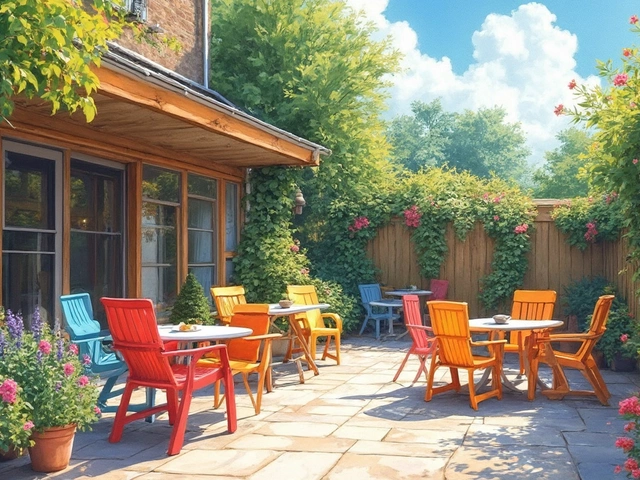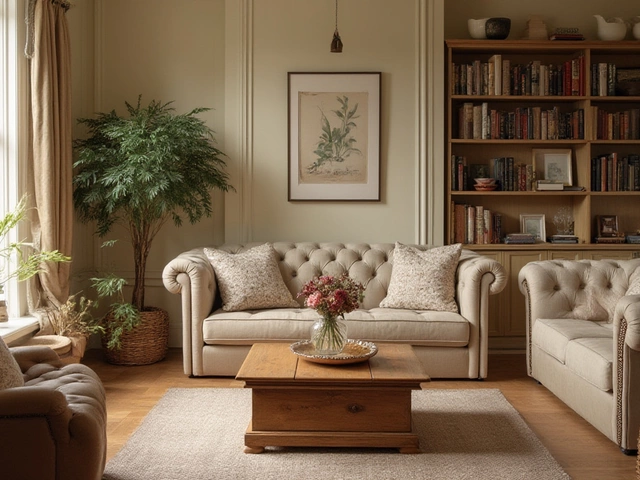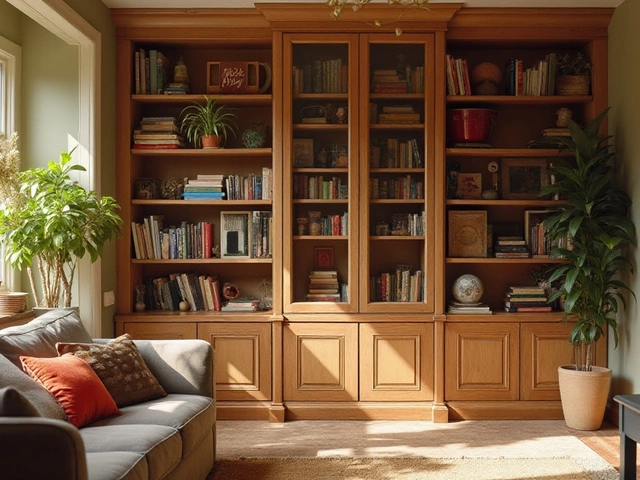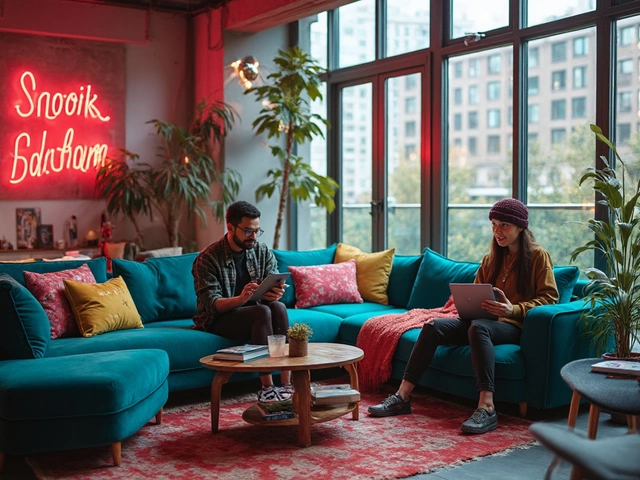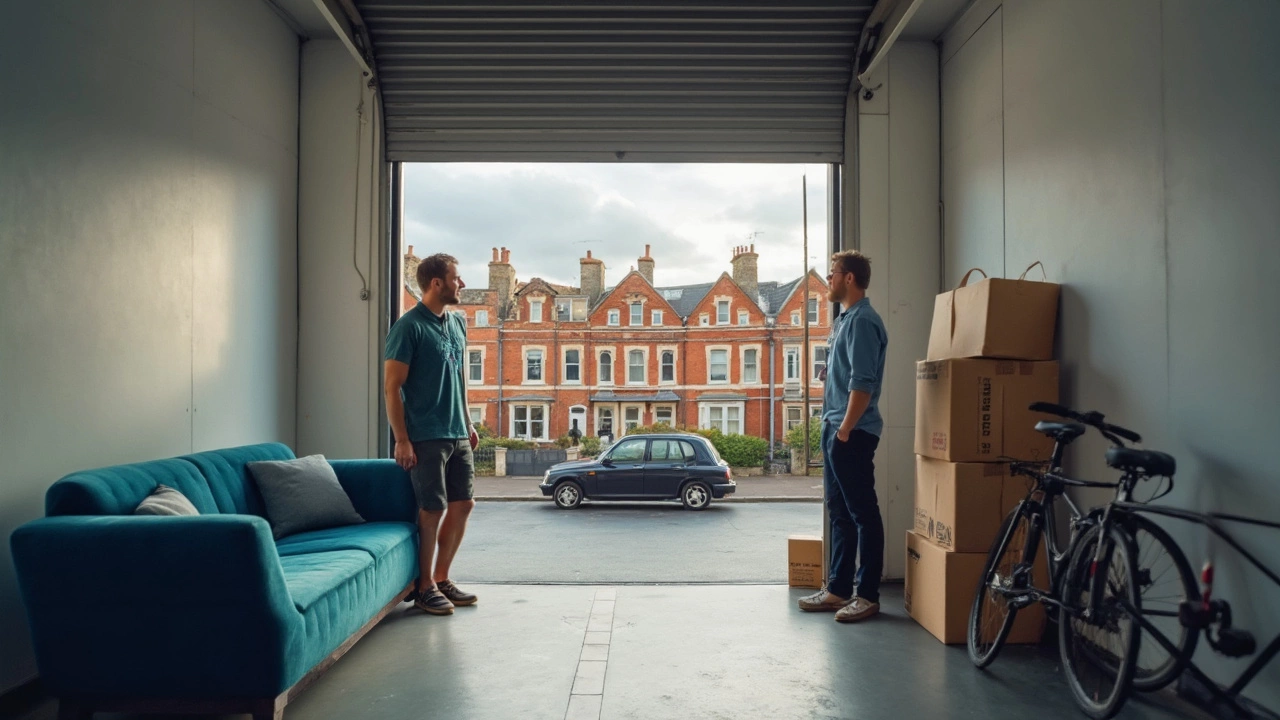 28
Jun,2025
28
Jun,2025
It’s wild how many people rent a 10x10 storage unit and have no idea just how much can squeeze inside. Seriously. One minute you’re looking at your plush couch, a mountain of boxes, maybe that stubborn coffee table you can’t part with, and you’re wondering, “Can all this actually fit?” Storage units are a game of real-life Tetris, and nobody wants to end up with a scratched sofa or a busted lamp. A 10x10—it sounds big on paper, but is it really?
Understanding the True Size of a 10x10 Storage Unit
Let’s talk numbers and reality. A standard 10x10 storage unit is ten feet by ten feet, which equals 100 square feet of floor space. Most storage units are about eight feet tall, so we’re talking about 800 cubic feet. That sounds massive until you start picturing your stuff inside it. For reference, mattress sizes are a good place to start: a queen bed is about 5 feet wide and 6.5 feet long. You can lay down almost two queen beds side by side in a 10x10. But it’s not like you can stack everything flat – you need to think vertically.
Here’s a quick comparison, just to put it in perspective:
| Item | Average Dimensions (inches) | Fits in 10x10? |
|---|---|---|
| Standard Couch | 84 x 38 x 34 | Yes |
| Sectional Sofa (L-shape) | 95 x 95 x 36 | Usually (with careful arrangement) |
| King Bed | 80 x 76 x 12 | Yes |
| Dining Table (6-seat) | 72 x 38 x 30 | Yes |
When you walk into an empty 10x10, it looks bigger than your bedroom. But the magic starts to disappear the second you start piling in your stuff. Couches, by their shape, take up lots of space. You can’t always stand them on end because of their length and legs. But the answer is yes—a standard couch absolutely fits in a 10x10 unit. And that’s with space for a few more furniture pieces too.
The real trick is clever stacking and packing. Many storage managers say a 10x10 is enough for typical contents of two bedrooms or a family room and appliances. If you’re storing a full living room set (couch, loveseat, coffee table, TV stand, some boxes), you’ll have room left over for miscellaneous items, like bikes or even a mattress if you’re efficient. I once watched a guy load in a sofa, two armchairs, a mountain bike, and at least a dozen moving boxes into a 10x10, and he closed the door without breaking a sweat.
How to Fit a Couch (and More) into a 10x10 Storage Unit
If you’re nervous about getting everything crammed in safely, you’re not alone. Here are some practical tips:
- Measure first: Don't just eyeball your couch. Measure its length, depth, and height. Most standard couches run between 72 and 90 inches long, but sectionals can sprawl out more.
- Remove legs and cushions:
- If possible, take off the legs and all cushions. Store legs and cushions in a labeled box. This instantly gives you extra wiggle room.
- Stand couches on end (if you can):
- This works for some types—check if your couch’s structure allows standing vertically. It can save you a bunch of floor space.
- Protect with covers and blankets:
- Use plastic wrap or moving blankets to keep the fabric safe from dust and scrapes. Tuck smaller boxes or lightweight items underneath or behind the couch.
- Stack smart:
- Heavy, sturdy items on the bottom, fragile or weird-shaped stuff on top. Plan to leave a walkway, so you don’t have to climb over grandma’s bureau every time you need something.
- Use vertical space:
- Think tall. Shelves, lightweight plastic bins, and even carefully placed chairs can all live happily above or beside your couch without causing damage.
Here’s a concrete example: a friend was moving after college and had the typical collection of chaos—a three-seater couch, a futon, half a dozen big moving boxes, a couple of guitars, and a mini fridge. Everything fit in a single 10x10, with room for him to grab stuff out without pulling everything out of the unit. The secret? He removed the couch legs, nestled boxes inside the open area under the couch, and used the vertical trick for light boxes.
One manager at a self-storage facility told me,
“People are usually shocked at what you can actually fit, if you come in with a plan—stack smart, go up before you go out.”That advice helped more than a few of us college grads with our life-in-storage years.
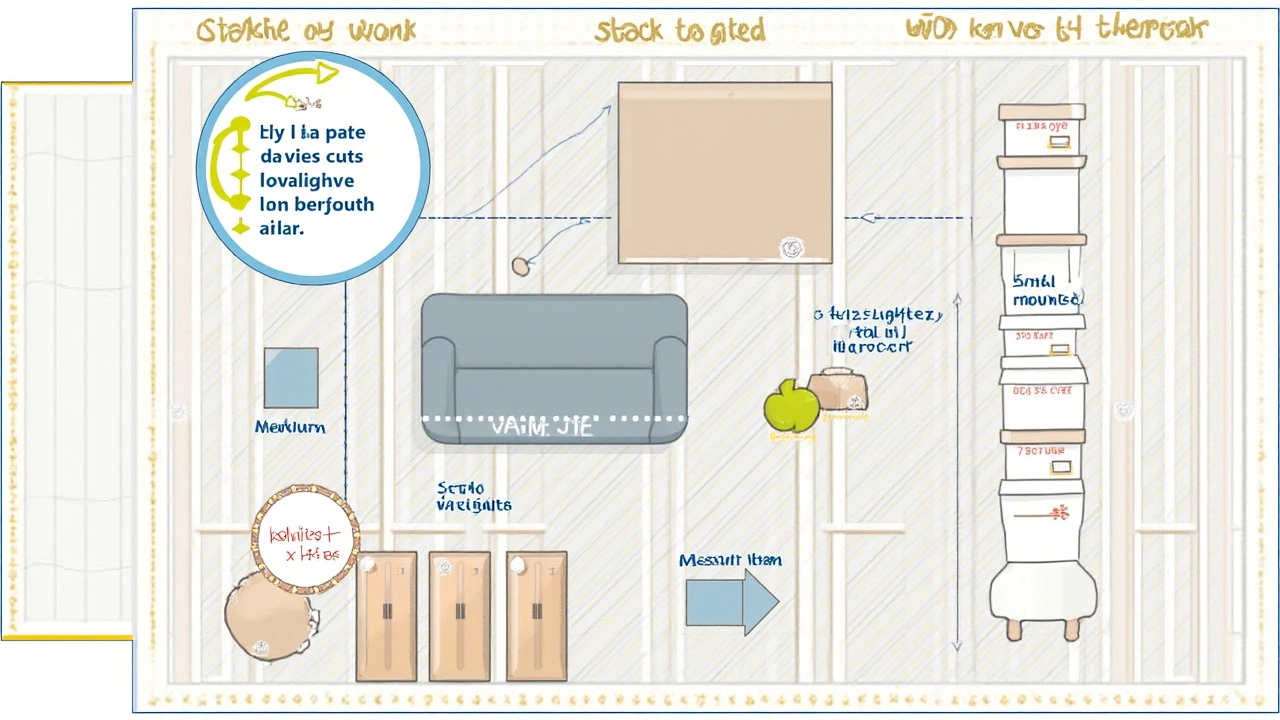
What Else Can Fit Alongside Your Couch?
A 10x10 storage unit is like a blank slate: there’s room for creativity, and the right plan lets you stash way more than just a sofa. Besides your couch, here’s a realistic list of stuff you can fit (as long as you plan ahead):
- Queen or king mattress and box spring
- Couple of dressers
- TV, coffee table, a couple of nightstands
- Stack of 15-25 good-sized moving boxes
- Some kitchen appliances (mini fridge or microwave)
- Bikes or sports gear
- Clothing storage bins
Getting everything in without playing storage Jenga for hours? That just calls for some know-how. Stack boxes by size, fill in the open areas under tables or armchairs, and save space by taking apart what you can (think dining tables, bed frames). Some units even have little shelving ledges inside already, so lightweight boxes or holiday decorations can go up high, out of the way.
If you check out Reddit threads for moving and storage, people have posted photos of wildly creative setups: entire living rooms – sofa, recliner, TV stand, all stacked safely with moving pads and bungees. One common trick is creating a center aisle so you don’t have to dig through everything to find one box at the back. This is even more important if you’ll be stopping by the unit often.
Renters also find inventive solutions for fragile items—store artwork or mirrors at the very back against the wall, upright, with moving blankets. Or, you can place those breakables between mattresses or sofas for some natural padding. That way, you’re not just jamming things in—you’re protecting your investment.
As far as stats go, a survey from the Self Storage Association found that the most common items in storage units (besides boxes) are furniture, mattresses, and electronics. The 10x10 storage unit is among the most popular sizes precisely because it gives you room to fit essentials without overpaying for unnecessary space. Most families find it’s the sweet spot for moving between places or stashing stuff during a remodel.
Storage Unit Packing Hacks to Maximize Your 10x10
This is where a little insider knowledge makes your life a thousand times easier. Storage pros know a few tricks can seriously bump up your space game.
- Break down everything: Take apart bed frames, remove couch and table legs, unscrew shelving units. Store hardware in clearly labeled bags.
- Store tall things upright: Stand mattresses, couches, and doors on their sides or ends if the dimensions allow. Saves serious floor space.
- Fill hollow spots: The underside of a couch, shelves of a bookcase, inside appliances—all prime real estate for bins or soft goods.
- Label everything: Giant Sharpie on every box. You’ll thank yourself later when you need to find holiday decorations without opening every mystery box in the back.
- Leave pathways: Especially if you’ll be accessing stuff regularly. Nothing’s worse than having to unload the entire unit just to grab your snowboard or a single book.
- Use pallets or boards: Keep furniture and boxes off the floor to avoid possible moisture and improve air flow. Even cheap wood pallets work.
- Stack by size and weight: Heavy boxes and furniture go on the bottom; lighter, fragile things sit on top.
- Cover with moving blankets: Protects your couch and keeps dust off everything. Even an old sheet works.
Something most folks don’t think about: climate control. If you’re storing a couch with leather, suede, or wood for longer than a month or two, ask about a climate-controlled unit. Excess heat or humidity can wreck good furniture—leather cracks, wood warps. No dollar amount saves your favorite sofa if the foam in the cushions turns to sponge cake.
Here’s a pro tip from a seasoned storage manager: “Never store anything directly against the unit’s wall. Leave a little air gap to fight off mold and let things breathe.” I’ve seen more than one couch show up with a musty odor because someone forgot this small detail.
It can feel like a puzzle the first few times you pack a storage unit, but with a little measuring tape, a screwdriver, and a few moving blankets, you’ll make that 10x10 work. And yeah, your couch is going to fit—just don’t be afraid to get hands-on and rethink the way you stack and store. Who knows, maybe you’ll even end up with room to spare for that lamp you didn’t think would make it.
